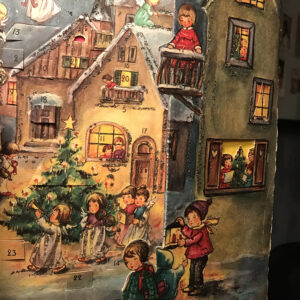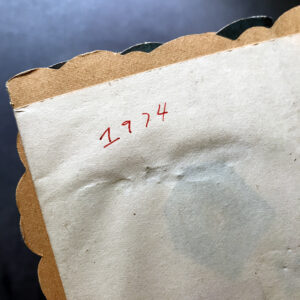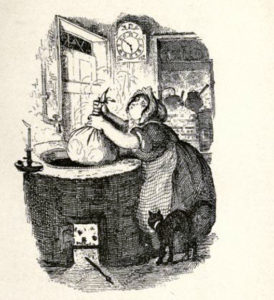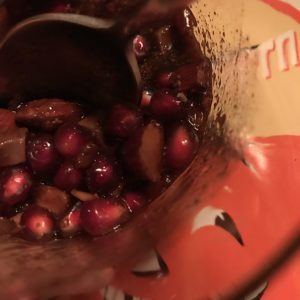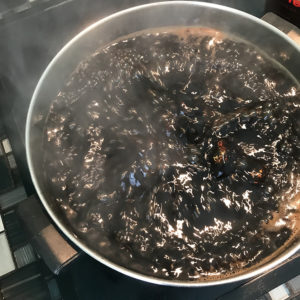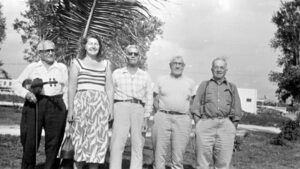Advent has begun, and so has Chanukah. Darkness continues to expand each night on our approach to the Midwinter Solstice, and we respond with increasing candlelight. The symbolism is rich, and direct. Sunday brought the first night of each of these celebrations. Chanukah is the older of the two, a festival in the Jewish calendar commemorating the miracle of one day’s worth of oil keeping the sacred lamp of the Holy Temple at Jerusalem burning for eight days, while Advent, in the Christian calendar, dates back to at least the fourth century. But the nightly practices for both observances are so similar: we begin with a single lit candle, and as the nights go by, more and more candles are illuminated, bringing more and more light to our darkest nights.
As with most celebrations, there are religious and secular approaches. The religious approach to Advent focuses on the four Sundays preceding Christmas Day. Last Sunday began this season and with it, we set out a ring of four candles, wreathed in evergreen fir or balsam. Three candles are purple, one is rose. The first, which we illuminated on Sunday, is a purple candle, representing Hope. On the Second Sunday of Advent, two purple candles are illuminated: the original one and a new one, representing Peace. On the Third Sunday of Advent we add to those the rose candle, symbolizing Joy. And on the Fourth Sunday of Advent, the third purple candle is illuminated, too, this one representing Love.
Advent is the beginning of the church year. It has another meaning, too: Arrival. And even if your Christmas celebration is a purely secular one, Advent has its place: Hope, peace, joy, love –– all those things that are represented by those purple and rose candles help us set the stage for the abundance that is Christmas. Hence Advent –– which used to begin on the 12th of November, the day after Martinmas and our annual time of remembering the dead –– being a time of preparation, a time of making our house as fair as we are able (as an old French Advent song goes). The house is literal, and it is figurative: we clean our home and prepare it for garland and a tree, but we are the house, as well, and before we can properly understand the joy and celebration of Christmas, it is helpful to acknowledge our need to feel those things, lest Christmas come off as too cloying, too sweet. The most wonderful time of the year? Yes, but let’s acknowledge the darkness, too. Let’s do that first. Let’s understand that it is light that pierces the darkness, a light that comes from within. Hide not your light under a bushel. And so it is a time, as well, to make amends, and to right wrongs.
The secular celebration of Advent is marked beautifully by daily Advent calendars and candles. The candles are marked with numerals 1 through 24, as are the calendars. These are Old World traditions that have their roots in Germany. I’ve had a traditional glittery Advent calendar from Germany most every year, since I was a kid, when my sister Marietta would bring one home for me at the start of each December from her job at a card and gift shop that was owned by an old German couple, Fred and Jean Beisner. So many of our family’s Christmas traditions still to this day come down to us from the Biesners. And this is why we sell traditional German Advent calendars at the Convivio Bookworks website, and daily English Advent candles, too: I loved these things from my childhood, and I hope you’ll love them, too. They are things no one needs, I know, and yet they help root us, and help us approach Christmas with sound footing.
I saved every one of those Advent calendars from my childhood, and even then, knew in my heart they were important enough that I should archive them by writing the date on the back. And here we are, all these years later, and here I am, a peddler of Advent calendars. You can still order yours today (we’ll ship them out today, too). You’ll have a few days of fun catching up to do, but so be it. If you’re local, order and choose the Local Free Delivery option if you’re in the coastal Lake Worth, Lantana, or West Palm Beach area, and I’ll bring it to you myself (by vintage Raleigh bicycle if you’re in my neighborhood), and you’ll definitely have your order in time for the First of December.
CHRISTMAS STOCK-UP SALE
Spend $75 on anything and everything in our catalog, and save $10 plus get free domestic shipping: a total savings of $19.50. Just use discount code STREETFAIR at checkout. Click here to shop! We always offer free domestic shipping when you spend $60 –– no discount code is required for that. I think you’ll be amazed at all you’ll find that’s new at our website, especially if you haven’t visited in a while!
COME SEE US!
We’ll be popping up at a few nearby pop-up markets this season, and if you’re local, we’d love to see you. We’ll be outdoors at all these markets… and these are some of our favorites: they are the most fun and festive each Christmas!
HOLIDAY NIGHT MARKET & FESTIVAL at SOCIAL HOUSE
Saturday December 4 starting at 6 PM at 512 Lucerne Avenue in Downtown Lake Worth Beach. Inspired by traditional European Christmas markets. We’ll have a tent in the outdoor courtyard with a large selection of our Advent and Christmas artisan goods from Germany, Sweden, and Mexico, Shaker culinary herbs and herbal teas, and some of our textiles from Kei & Molly Designs and Millie’s Tea Towels.
KRAMPUSNACHT at the AMERICAN GERMAN CLUB
Friday December 10 from 7 to 11 PM at 5111 Lantana Road in suburban Lake Worth. Tickets required. It’s the night before Christkindlmarkt and get a babysitter, because this one is for the adults. What once was meant to frighten youngsters into good behavior, Krampusnacht in Europe has taken a twist over the decades and become a fun night of mischief and dancing, as the Krampus of German legend takes over. Expect to see many Krampuses at this inaugural Krampusnacht celebration! Our largest pop-up shop ever, which will carry over into Christkindlmarkt the following two days, will include Advent candles and calendars, Christmas artisan goods from Germany, Sweden, and Mexico, Shaker culinary herbs and herbal teas and soaps, Millie’s Tea Towels, our new line of tea towels and reusable bags from Kei & Molly Designs, market bags from Mexico, and more.
CHRISTKINDLMARKT at the AMERICAN GERMAN CLUB
Saturday December 11 from 2 to 10 PM and Sunday December 12 from Noon to 8 PM at 5111 Lantana Road in suburban Lake Worth. A traditional German Christmas market. Tickets required. Our largest pop-up shop ever will include Advent candles and calendars, Christmas artisan goods from Germany, Sweden, and Mexico, Shaker culinary herbs and herbal teas and soaps, Millie’s Tea Towels, our new line of tea towels and reusable bags from Kei & Molly Designs, market bags from Mexico, and more.
Images: Scenes, front and back, from one of my first German Advent calendars: 1974.
